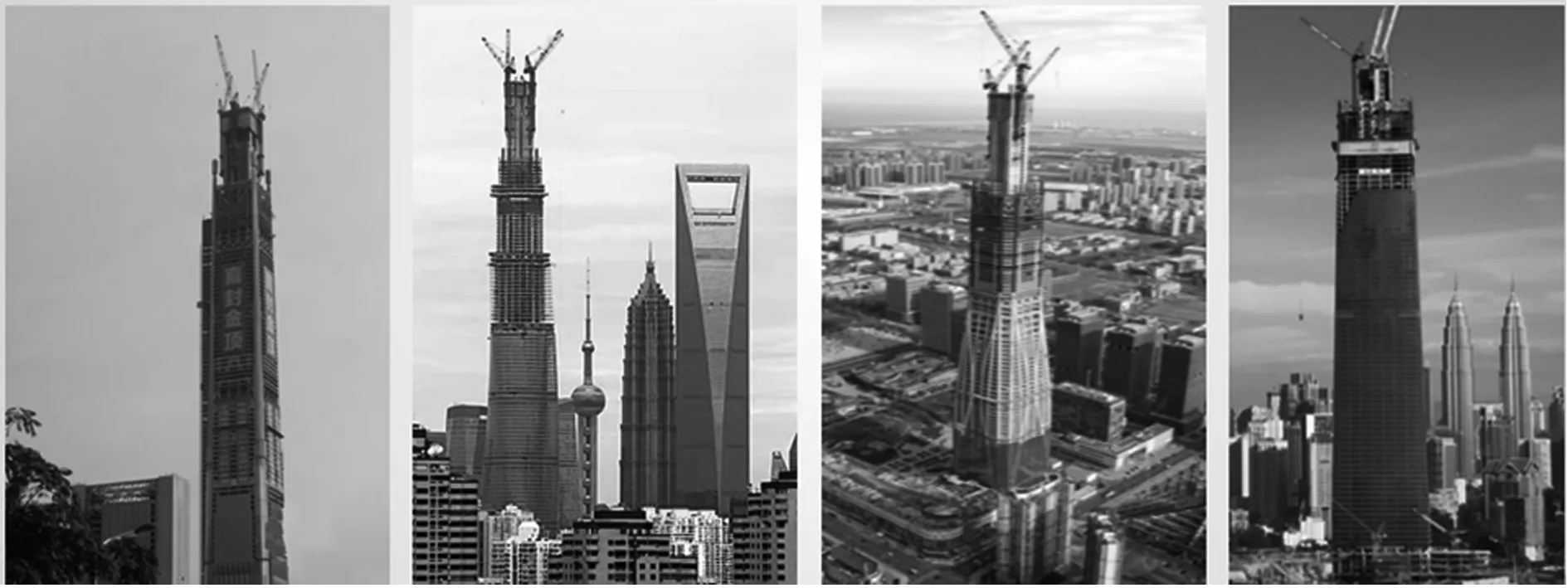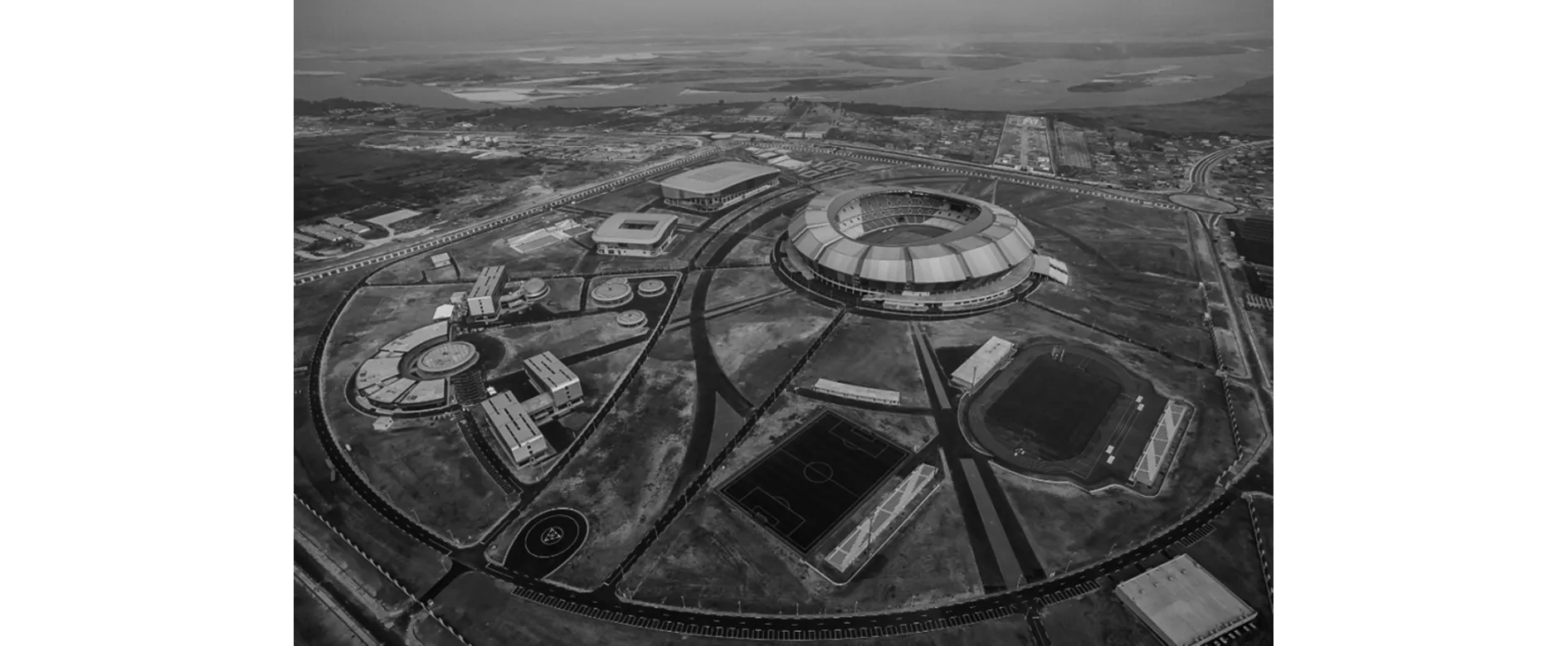EPC特点与项目管理重点*
2022-08-02田伟
田 伟
(1. 上海中建海外发展有限公司,上海 200125;2. 中国建筑股份有限公司埃及分公司,埃及 开罗 11835)
1 Introduction
EPC is a world widely used project contract mode in which the general contractor is fully responsible for the duration, cost, quality and safety of the contracted project[1].It refers to the contract mode in which the general contractor conducts the engineering, procurement, construction, trial operation and other work.
The primary idea of EPC is to tightly integrate engineering, procurement and construction, and the design plays a leading role in the overall process of project. The general contractor is in charge of integrating, managing and coordinating all labor, finance, material, information and other resources. In addition, as shows in Fig.1, the general contractor occupies the central position in the project management. As the client’s “Steward” (duration, quality, cost and safety) and a “Firewall” against risks, the general contractor manages all the resources and deals with all the information. Engineering includes not just specialized design work, but also the overall planning, as well as the ad-hoc planning, implementation, organization and management. Procurement also refers to the procurement of professional equipment and materials rather than the general procurement. Construction includes building, installation, trial operation and technical training[2].

Fig.1 Core position of general contractor
EPC contract mode first appeared in the 1960s. It has been acknowledged by all parties for its unique advantage of “overall-process” general contracting and administration from its beginnings, and has been gradually promoted globally[3]. In 1999, FIDIC publishedEPC/TurnkeyProjectContractConditions, laying the groundwork for continued EPC development[4]. Nowadays, EPC has come to be the dominant contract mode in international projects.
2 Characteristics and core points
2.1 Advantages
The EPC mode provides several advantages, the most important are listed as follows.
1)It clearly defined obligations for the client and the general contractor, reducing conflicts and disputes among all parties and lowering the chance of project loss or failure. Clients can realize the unilateral responsibility structure of the general contractor[5]. The client is mainly responsible for the design idea, determining functions and technical standards, and supervising the general contractor. Client organization, coordination and management input workload are lower than in other contract modes, resulting in lower risk. The first responsible party is the general contractor, who takes almost full responsibility and undertakes almost all the project’s work. It promotes the overall project control and the communication and coordination with all subcontractors, while general contractor suffers great risks[6].
2)It integrates the process of engineering, procurement and construction. Achieving the target of overall operation of engineering, procurement and construction under a unified framework through organization and coordination, it fully utilizes the general contractor’s comprehensive capability and enthusiasm, improving the overall operation efficiency of the project.
3)It is beneficial for the client to control the cost of the project. The investment can be locked when the contract is signed, reducing the client’s risks. The client’s management input and risks are reduced at the same time[7]. General contractors can also optimize design, integrate resources, reduce costs, and achieve a win-win situation in terms of both quality and cost.
4)The project design can take the lead. Design is no longer a separate process, which serves the project’s overall interests as well as the procurement and construction. Based on the close cooperation of the general contractor and design team, it is possible to enhance the overall benefits of project through design optimization and resources integration[8-9].
2.2 Disadvantages
1)The client has low control over the project. Through the EPC contract, the client mainly supervises the general contractor and has limited involvement in the intricacies of project implementation. The general contractor is in charge of the project’s major work general contractor, the scope and work of the owner’s management are relatively limited, and the intensity of the client’s control over the project is low. It is difficult for the client to accurately comprehend the project’s execution and quality specifics.
2)Bidding is less competitive and discriminating. Generally, EPC contracts will be used for projects with large investment sizes, long construction durations, highly complex technology and considerable uncertainty. Due to high requirements on the comprehensive capacity of the general contractor, the number of qualified bidders is significantly fewer as compared with traditional contracts.
3)The general contractor has higher level of risk. In the EPC mode, the general contractor is broadly involved in engineering, procurement and construction and with large amount of work, assuming more responsibilities and risks, as well as unforeseeable and inevitable risks, which can sometimes easily lead to increased costs and construction delays if the contractor is not competent for such projects[10]. These claim rights owned by the contractor in the traditional mode no longer exist under the EPC mode, increasing the contractor’s risk greatly. The client transfers all risks to general contractor, therefore if the general contractor experiences management or financial issues general contractor, the project may face significant risks or failure.
4)The quotation may be higher if a lump sum contract is adopted. Because EPC projects need large investments, a long cycle time, and a high level of complexity, lump sum contracts are commonly utilized to alleviate the client’ cost risk caused by uncertainties in the implementation process. Because the financial risk faced by the contract is significant, general contractors may consider factors such as input cost, fair profit and risk in advance while bidding, which may lead to higher bids.
2.3 Game theory analysis
Based on objective conditions and specific rules, project participants will naturally choose strategies and activities which are beneficial to themselves. Based on the resources and information at hand, they must maximize benefits and minimize risks. The concerns and corresponding strategies must be totally different between the major the project’s participants including the client and the general contractor.
The client’s main concern is high cost, poor project control and poor quality, and he will instinctively try to strengthen management and enhance project control by cutting the EPC, designating design subcontractor, hiring a professional team to supervise the management of the general contractor. However, all these measures taken by the client often lead to the complicated process, rising management costs, and declining management efficiency.
The main concern of the general contractor is responsibility and profitability. For EPC project, the general contractor needs greater responsibility, larger risk and higher implementation difficulties, which naturally increase management workload and cost, and the contractor expects higher profits.
The client wants to save cost, the contractors want a fair profit, and there is a fixed budget. How can this contradiction be solved, and where do the cost savings and a fair profit come from?
This investigation led to the core of EPC contracts, which is the cost control for client, as well as the risk and benefit sharing mechanisms for all parties.
All of the cost savings and fair profits come from the deep digging of management, which includes increasing the general contractor’s capability, improving management efficiency, integrating separate processes, value engineering, and so on. All of the costs saved as a result of these efforts are a source of cost savings for the client and a fair profit for the general contractor.
3 Points of view on EPC
3.1 The superiority of EPC is based on the seamless integration of engineering, procurement and construction, which should not be separated
The integration of the stages of construction is the strength of the EPC project. If the EPC project is intentionally divided into different stages, the original organic integrity is divided into several parts. Such a division will inevitably produce new interfaces, which will not only increase the cost of project management for the client (the client will need to hire a competent, responsible and experienced project management team), but also greatly reduce the efficiency of project implementation.
3.2 “Win-win-win” situation for the client, the general contractor and the subcontractor
Establishing benefit-sharing mechanisms can benefit all stakeholders. The absence of losers is the success. In the overall management process, it implements the concept of “Win-win-win” in Fig.2, “Big win for client, medium win for general contractor, small win for subcontractor”.

Fig.2 Win-win-win situation
3.3 Design should play the leading role, and the general contractor should take charge of design
Design is the basis for procurement, construction and installation in the construction process. Safety, reliability and economy of the project largely depend on the rationality of the design effort, so design has direct impact on the quality, progress and investment of project.
The EPC project must take design as the core, and design should take procurement and construction into overall consideration. Design should guide procurement and construction, and improving design to satisfy the requirements of procurement and construction is the main route for maximizing EPC project’s efficiency and cost control. Design is the major tool for cost management, and it is so important to be in the hands of the general contractor who takes charge of procurement and construction.
3.4 The general contractor is the defender of shared interests of subcontractors
To achieve the ultimate purpose of the project, the general contractor must unite all subcontractors to work towards a shared objective. The general contractor should bring together all subcontractors and develop a community of common interests, after which the rules of the game should be set for all the participant. Only cooperation can win.
3.5 The growth of EPC general contractor
The main reason for the client’s deep involvement in project management is that the client is concerned that the general contractor’s capability does not meet the investment of the project. Large international contractors are increasingly taking the role of the investor and the developer, instead of working as construction contractor only. With the growing design capabilities, improved resource integration and global procurement, the growth of the general contractor makes EPC project more pratical and efficient.
4 Challenges in EPC projects
4.1 Intentional division of construction process makes incomplete EPC
Based on rights and interests, clients tend to intentionally divide EPC projects into several parts in order to strengthen the project control. For instance, the client may take design out or appoint a subcontractor, resulting in an incomplete EPC project. In the implementation of such projects, many hours are spent on coordinating, adjusting, modifying, and even arguing over contracts across interfaces, significantly lengthening the construction time and increasing the cost as each party incurs their own overhead and profit.
4.2 General contractors are losing full autonomy
This always happens when clients take dual control over the project, such as having overall control over the project’s duration, quality and cost, or strictly regulating the operation process of the project. This is exemplified by the fact that all actions taken by the general contractor must be approved by the client. It can come to the point where even little elements such as road signs or badges require the approval of the client or the client’s representative, making it extremely difficult for the general contractor to manage and implement the project.
4.3 Client’s control over design
Despite the fact that the EPC contract is signed to the general contractor, the client clings to certain of the contractor’s rights. For example, the client retains the authority to select subcontractor, sometimes even directly assigns them, and does not relinquish the right of managing subcontractors, or issues instructions directly to subcontractors over general contractor.
Furthermore, it is usually stipulated in the general contract that the client’s exercise of the aforesaid rights does not alleviate or exempt the general contractor from contractual obligation, namely, the contractor is still responsible for all client’s actions.
One of the most common situations is that the client designates design subcontractor, and the design subcontractor directly follows the instructions of client, resulting in proposals that the general contractor may not adopt and the advantages of the integration of engineering, procurement and construction may not be valid, which not only limits the capability of general contractor, but also affects the overall interests of the EPC project.
4.4 Insufficient capability of general contractor
The client transfers most risks to the general contractor, which requires the general contractor’s high comprehensive capability to complete the project. The general contractor’s technical competence, management ability or experience, or inadequate capacity to collect funds or organize resources may all pose risks. Any of these factors may cause failure of the project.
5 Successful EPC projects
This section presents a number of cases in which the EPC contract mode was adopted for the successful completion of the project. Three cases are presented throughout the world. Every project has its own unique features and characteristics. The projects were completed in different countries with varying legislations and circumstances, one of which was rapidly constructed in the middle of Novel Corona Virus epidemic. Therefore, the efficiency of EPC contract modes is demonstrated and proved to tackle various challenges associated with the project.
5.1 Signature Tower in Kuala Lumpur
Signature Tower, in Kuala Lampur, Malaysia, is 452 meters tall and covers 400,000m2of building area. The skyscraper consists of 97 stories above ground and 4 stories below ground, which is the highest building in Malaysia, as shown in Fig.3. China State Construction Engineering Corporation is the general contractor (CSCEC). Signature Tower achieves the fastest construction speed for skyscrapers over 400 meters in the world, taking only 3 years to complete compared to 5 to 6 years for other ultra high-rise buildings of similar height, as shown in Table 1. Construction of the concrete core wall reached the speed of 2~3 days for every floor, setting a new record for the fastest construction of core wall in an oversea project.

Fig.3 Signature Tower in Kuala Lumpur

Table 1 Construction duration (400 ~ 500m completed buildings)
The main factor in the project’s success is the management of the general contractor, which used a compact overlapping management strategy to achieve the efficient overlapping of concrete core wall, steel structure, MEP, and decoration. As shown in Fig.4, the core wall, steel frame, metal deck, fireproof coating, curtain wall and other processes are closely followed. Fig.5 shows a comparison between Signature Tower and other super high-rise buildings. It can be seen from the figure that Signature Tower’s construction processes of core wall, steel structure and curtain wall are overlapped closely. The compact overlapping management was mainly owing to the general contractor’s full autonomy in integrating the engineering, procurement and construction, organizing all the resources.

Fig.4 Construction management of Signature Tower in Kuala Lumpur-compact overlapping management

Fig.5 Comparison of core wall topping out
5.2 Brazzaville Sports Center in the Republic of Congo
Brazzaville Sports Center has a total area of 900,000m2and a construction area of 350,000m2, including a 79,533m2football and athletic field with 60,055 seats, an 11,818m2water sports facility, a 31,433m2gymnasium and 14 outdoor match and workout venues, as shown in Fig.6. The general contractor, CSCEC, completed this project in 22 months. Compared to similar scale projects, the construction time is a third shorter.

Fig.6 Brazzaville Sports Center
The following management strategy is the main reasons for the success of this EPC project: serving the general interest, unifying management, giving equitable participation, professional, centralize procurement, and share of profit and loss. This management strategy strengthens the integration of engineering, procurement and construction, enforces design to take the lead, and enhances procurement and resource organization, and sets fair rules for contractor so that they can make a fair profit, which increase their enthusiasm. All of these mechanisms contribute to the success of this EPC project.
5.3 Huoshenshan Hospital and Leishenshan Hospital in Wuhan
To fight with the novel coronavirus, Wuhan government decided to construct two hospitals dedicated to the treatment and isolation of COVID-19 patients as an emergency project. CSCEC was selected as the general contractor of this EPC project. It seemed impossible to complete a hospital of such scale in ten days. Nevertheless, CSCEC did succeed.
Huoshenshan Hospital has a total area of 33,900m2with a capacity of 1,000 beds. The hospital also includes intensive care unit, critical care unit, general unit, and auxiliary departments such as infection control, testing, and special and radiological diagnosis. The construction took only 8 days to complete.
Leishenshan Hospital has a construction area of 60,000m2and a capacity of 1,600 beds, with 32 wards, including 2 ICU wards, 3 sub-ICU wards and 27 normal wards. The construction scene of Leishenshan Hospital is shown in Fig.7. The project was completed in 10 days.

Fig.7 Construction of Leishenshan Hospital
These two hospitals have all of the amenities of a typical top hospital, as shown in Fig.8.

Fig.8 Facility in Leishenshan Hospital
The success of these two hospitals may be attributed to a number of factors, including:
1)Initial and first, design takes the leading role; the first version of construction drawing was completed in 24 hours, the box structural system was adopted, and ready-made materials were used, creating a solid foundation for success.
2)The second step is the procurement, all of the materials and equipment were arrived on time.
3)The construction, which was done in 3 shifts over 24 hours of daily working hours, with excellent organization and overlapping sequence.
4)The last and the most important factor is the enthusiasm of all participants. They were motivated by patriotism rather than profit.
For these kind of super-fast-track projects, geological exploration, design, procurement and construction must be completed at the same time, and all the materials and resources must be organized in a short amount of time. Clients, general contractors, designers, consultants, suppliers, sub-contractors at all levels, and other stakeholders should be involved from the start, cooperating closely and taking responsibility until the project is completed. The ultimate manifestation of EPC is Integrated Project Delivery (IPD).
6 Proposal on promoting EPC
1)Encouraging comprehensive EPC projects and discouraging unnecessarily dividing the EPC process.
2)EPC projects should take design as the core work.
It is better to assign design in the hands of the general contractor; nevertheless, design must take procurement and construction into consideration to maximize the efficiency of EPC.
3)Extending EPC to the front end as finance and the rear end as operation, such as F+EPC, EPC+Partner, IPD, and so on.
